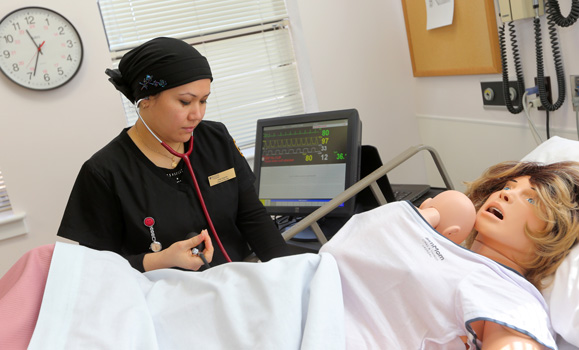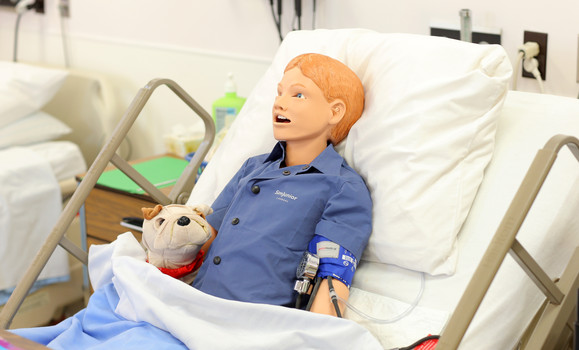Imagine a mannequin that can bleed, sweat, blink, cough, vomit and cry. Now imagine being able to put that to use as a training tool.
Meet the new faces of nursing education at Dal.
On Monday, the School of Nursing held demonstrations of its three new state-of-the-art, “high-fidelity” mannequin trainers at its Open House event. Throughout the day, visitors were able to drop into the Forrest Building and witness the simulated patients being put through various real-life medical scenarios, including a cardiac arrest and an asthma attack.

Each of the three trainers — an adult male, a birthing female and a young boy — is able to simulate patients in a number of conditions, including heart attacks, digestive problems, collapsed lungs, respiratory problems, severe trauma and more. Each is able to mimic the symptoms and react according to the treatment given by the nursing students.
They’re controlled by a computer, which instructors are able to use to increase heart rate, change blood pressure and control other symptoms of the condition being treated by the Nursing students. The adult male trainer is even wireless, allowing him to be utilized in a number of out-of-hospital environments including ambulances, helicopters and even scenarios like a mock car accident.
The purchase of the trainers was supported by the Faculty of Health Professions.
“It’s a great investment that allows students to prepare for low-frequency, high-risk events and practice their clinical skills in a safe environment,” explains Kathleen MacMillan, director of the School of Nursing. “Students are able to practice, debrief the scenario and their treatment of it, and do it again. This doesn’t happen in real life.”
Carol Ritchie, a nursing instructor, says the trainers will have a dramatic effect on Dal’s Nursing program. Â
“They will allow us to offer different classes and different opportunities within those classes,” she explains. “It ramps up the simulation experience, allowing students to develop clinical judgement and critical thinking in scenarios before their clinical phases [of their degree].”

Nursing students are already familiar with working on task trainers and medium-fidelity models, which allow them to simulate taking blood, dressing and packing wounds, administering IV needles and other nursing skills. However, these models don’t respond to the treatment or change their manner as their condition worsens or betters. That’s where the high-fidelity models represent a dramatic improvement.
The adult male trainer even comes equipped with a speaker connected to the instructor’s microphone, allow them to give verbal feedback to the nursing students as if it were coming from the patient himself.
The trainers allow students to practice in more realistic environments, bringing more humanity and reality to the initial years of their training. Watching the mannequins in action, you can see how they enhance the realism of the medical scenarios and, despite their stone-cold faces, elicit some real emotion for students to respond to in a way they typically wouldn’t get to experience until their clinical training.
In short: the School of Nursing’s newest patients promise to give nursing students a bit more practice and a lot more confidence before they come to a patient's bedside.

